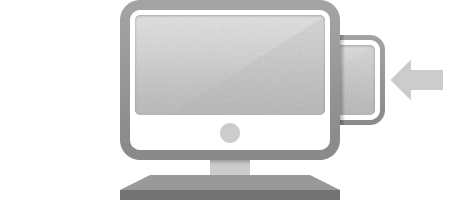It’s Christmas. Well, we’re 30 minutes into Christmas, that is. It’s currently 12:30am EST, and rather than sleeping soundly awaiting the arrival of a certain jolly gift-giver, I am awake. Working, even.
I’m working on a personal project that I will discuss on in the new year, however I can say it will be the catalyst for a new way of living for me. As you can imagine, that puts a whole boatload of pressure on me to ensure this project is successful. Everything must be perfect; every word laboured over and every pixel perfectly aligned.
So, where do I begin?
Meagan Fisher recently made a strong argument for beginning a site mockup in the browser, utilizing HTML and CSS to develop the site structure, look and feel. Others feel differently, arguing that the design should start in Photoshop (or Fireworks). Others, still, make the case that the best place to start is with sketches on paper.
I appreciate each of these views, and have tried starting different projects with each of these methods. I will continue to use each method at different stages of future projects. However, starting with this new project and with all projects to come, my starting point will be a pen, my Moleskine, and a concept somewhat new to me: Content Strategy.
The Chicken or the Omelette?
I taught myself web design through reading blog articles and following tutorials. I learned how to code in HTML and CSS, how to work with rounded corners in Photoshop, how to use multiple textures to create depth and a more realistic aesthetic. I have been learning about typography and how to properly use a grid system.
The problem with learning all of these things on my own is that I’ve been doing so out of context. It’s as if I am a waiter, bringing an omelette out to the table and declaring “look at this wonderful meal I’ve prepared for you!” Sure, I could probably explain to you what the different items on the plate are, but I couldn’t explain how the chef manages to squeeze in so many fillings, while at the same time cooking the omelette to a perfect golden brown. I couldn’t tell you what the reasoning behind the garnishes are, or how whatever is being served helps to maximize the taste of the meal.
A chef understands that eggs of a certain size, age, and origin are going to produce different flavours. She knows what fillings merge together to create delicious concoctions that make a patron’s mouth water. She knows what ambience, mood, lighting, music, etc. provide the perfect eating experience for her clients.
Starting a web design with Photoshop, a browser, or sketches is like grabbing some eggs and preparing an omelette to an empty restaurant. There is no context, no subtext, no, well, anything. All you have is decoration, void of purpose or strategy.
I’m speaking in fairly concrete terms here, I know. Most people don’t design with absolutely no purpose or thought as to what the content will be. If design is communication, then it stands to reason I should know what I’m trying to say before I wrap it all up in a pretty (and effective) package.
Too many times I have started to design with either a vague idea of what needed to be communicated, or (frighteningly) no clear idea at all. That stops now. No pixel will be moved, no bit of code typed, and no design decisions made until there is a solid content strategy behind it all. The same will go for future client projects; until I know what the client wants to say and who they want to communicate that message to, there is no point in deciding a typeface, a background colour, or anything else that isn’t related to the content.
It’s 2:40am. I just realized that no one in my family thought to leave out cookies and carrots for Santa and his entourage. I better go correct that, and hope it’s done before the lump of coal reaches my stocking.
※ Permalink for “Where Design Begins” published on date_to_rfc822






